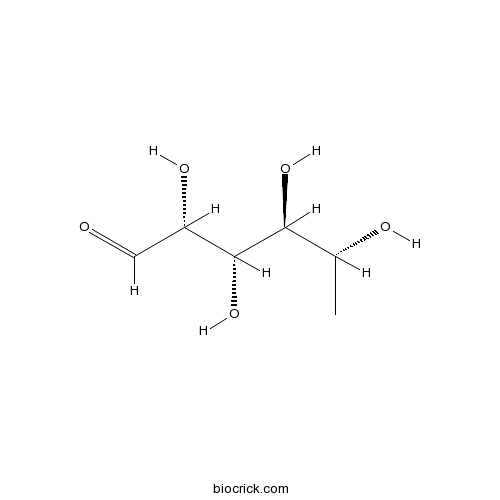Chlorella vulgaris
Chlorella vulgaris
1. The products in our compound library are selected from thousands of unique natural products; 2. It has the characteristics of diverse structure, diverse sources and wide coverage of activities; 3. Provide information on the activity of products from major journals, patents and research reports around the world, providing theoretical direction and research basis for further research and screening; 4. Free combination according to the type, source, target and disease of natural product; 5. The compound powder is placed in a covered tube and then discharged into a 10 x 10 cryostat; 6. Transport in ice pack or dry ice pack. Please store it at -20 °C as soon as possible after receiving the product, and use it as soon as possible after opening.
Natural products/compounds from Chlorella vulgaris
- Cat.No. Product Name CAS Number COA
-
BCN6432
D-(+)-Fucose3615-37-0
Instructions

Biodiesel synthesis from Chlorella vulgaris under effect of nitrogen limitation, intensity and quality light: estimation on the based fatty acids profiles.[Pubmed: 30109546]
None
Quercetin potentiates the concurrent hyper-accumulation of cellular biomass and lipids in Chlorella vulgaris.[Pubmed: 30093226]
Provision of chemical modulators has emerged as an effective strategy to govern cell growth and development. Here, the impact of flavonoid quercetin on algal growth, lipid accumulation and transcriptional patterns was investigated in the green microalga Chlorella vulgaris. These results demonstrated that quercetin (15 μg/l) significantly enhanced the cellular biomass and photosynthetic efficiency, with up to 2.5-fold in the biomass in the stationary phase. Lipidomic analyses revealed that lipid content was increased by 1.8-fold. Furthermore, the functional mechanism of quercetin on the molecular level was dissected by transcriptomic analysis. Results revealed that quercetin upregulated the expression pattern of key genes involved in cellular signaling mechanisms such as phosphatidylinositol 4-kinase α, thus consequently enhanced cell growth. Altogether, the data present in this study demonstrate the dramatic role of quercetin on enhancing microalgal biomass and lipid accumulation by unprecedented regulation, of key metabolic nodes, for the first time and provide a novel insight into microalgal metabolism and regulation.
Advantage Assessment of Mixed Culture of Chlorella vulgaris and Yarrowia lipolytica for Treatment of Liquid Digestate of Yeast Industry and Cogeneration of Biofuel Feedstock.[Pubmed: 30088243]
None
Immobilized microalgae for anaerobic digestion effluent treatment in a photobioreactor-ultrafiltration system: Algal harvest and membrane fouling control.[Pubmed: 30077170]
A photobioreactor (PBR) coupled with ultrafiltration (UF) system was developed with goals of microalgae cultivation, harvest, and membrane fouling control in the anaerobic digestion effluent purification. Firstly, three-sequencing batch PBRs were started-up with suspended Chlorella vulgaris (C. vulgaris, SCV), immobilized C. vulgaris (ICV) and immobilized C. vulgaris with powdered activated carbon (ICV + PAC). The results exhibited high DOC degradation (66.61%-84.35%) and completely nutrients (nitrogen and phosphorus) removals were attained in PBRs. This indicated bacterial-microalgal consortiums enhanced biodegradation and PAC adsorption accelerated photodegradation. During the microalgae harvest by UF, immobilized microalgae beads protected cells integrity with less debris and intracellular/extracellular organic matters lysis. Moreover, the cake layer in ICV + PAC could even serve as a dynamic layer to entrap the residual pollutants and control membrane fouling. Hence, membrane fouling mitigation and ADE purification were realized during the microalgae harvest process in the ICV + PAC.
Remediation effectiveness of Phyllostachys pubescens biochar in reducing the bioavailability and bioaccumulation of metals in sediments.[Pubmed: 30072221]
Biochar has potential for application for in situ metal-contaminated sediment remediation, mainly because of its cost-effectiveness. In this study, the effectiveness of Phyllostachys pubescens (PP) biochar for immobilization of cadmium (Cd) chromium (Cr), copper (Cu), nickel (Ni), lead (Pb) and zinc (Zn) by decreasing the bioavailable fraction was investigated using a series of laboratory sediment remediation microcosms. The results demonstrated that biochar could significantly reduce the bioavailable fraction of metals (except for Cr) by diffusive gradients in thin film (DGT) measurement in porewater. Additionally, amended sediment treated with 15% w/w biochar resulted in 79.71%, 73.20%, 54.86%, 49.75%, 31.16% and 0.99% reductions in the acid-soluble fraction for Cu, Pb, Ni, Zn, Cd, and Cr, respectively. Similarly, bioaccumulation of metals (except for Cr) by Limnodrilus hoffmeisteri was reduced by 18.45%-59.15% in biochar amended sediment. PP biochar at 15% could also reduce the inhibition or lethality rate by 37.5%, 18.1% and 36.3% for Chlorella vulgaris, Daphnia magna and luminescent bacteria Vibrio qinghaiensis, respectively. Overall, these results demonstrate the potential for biochar application for in situ sediment remediation.
Cultivation of Chlorella vulgaris on anaerobically digested swine manure with daily recycling of the post-harvest culture broth.[Pubmed: 30060405]
In this work, a cultivation system with daily recycling of the post-harvest culture broth was set up and performed in order to reuse the water and nutrients in pretreated anaerobically digested swine manure, which was used as media to cultivate Chlorella vulgaris (UTEX 2714) at different recycling ratios. Results showed that the alga grew well in the system with an accumulative algal biomass and productivity of 1.68-3.47g/L and 234.1-532.2mg/L/d, respectively, at the end of the cultivation. Additionally, chemical compositions in this alga varied with the change of recycling ratios, and the highest productivities of carbohydrate, protein and lipids (76.4, 257.2 and 183.7mg/L/d, respectively) were obtained in the system with a recycling ratio of 1/4 or 1/6. Fatty acid profiles indicated that this alga could be used as a good-quality biodiesel feedstock with a biodiesel productivity of 9.65-40.1mg/L/d.


